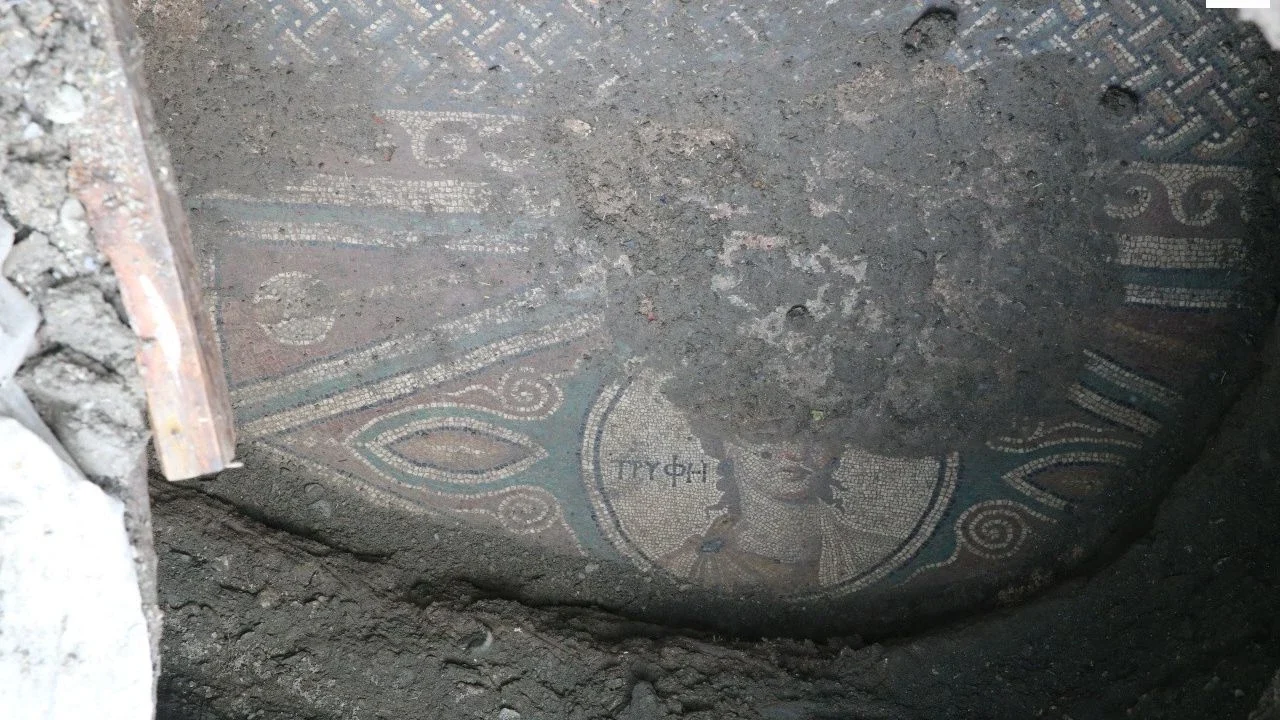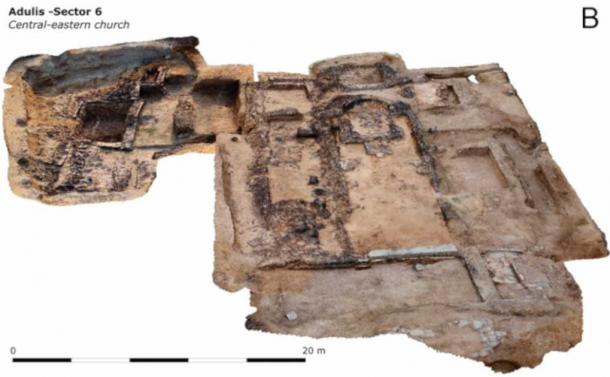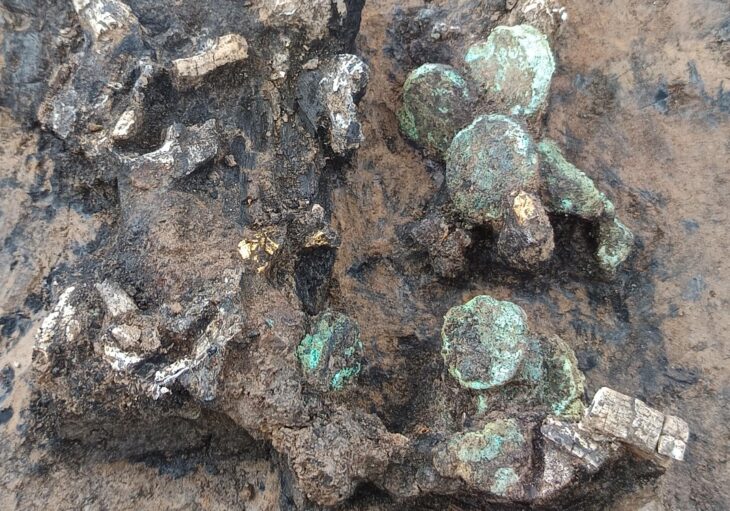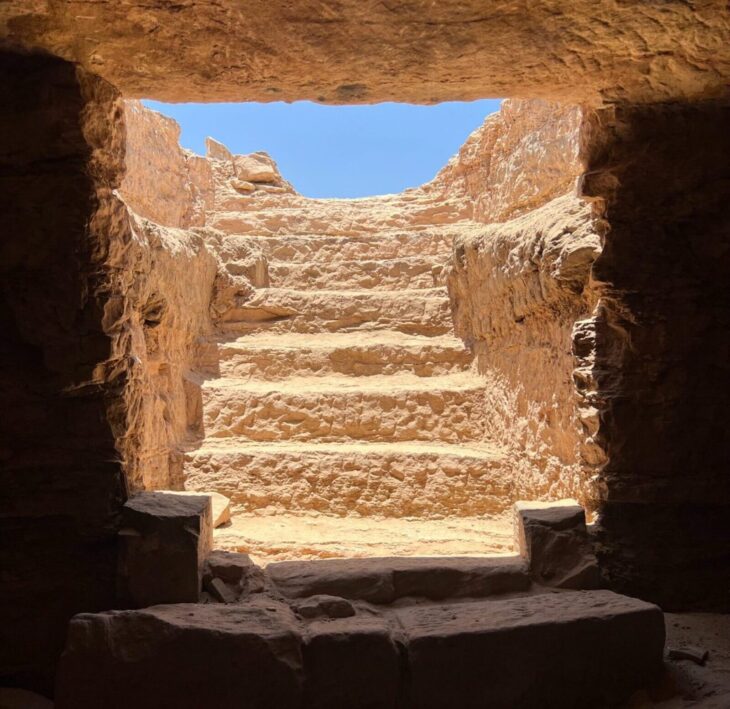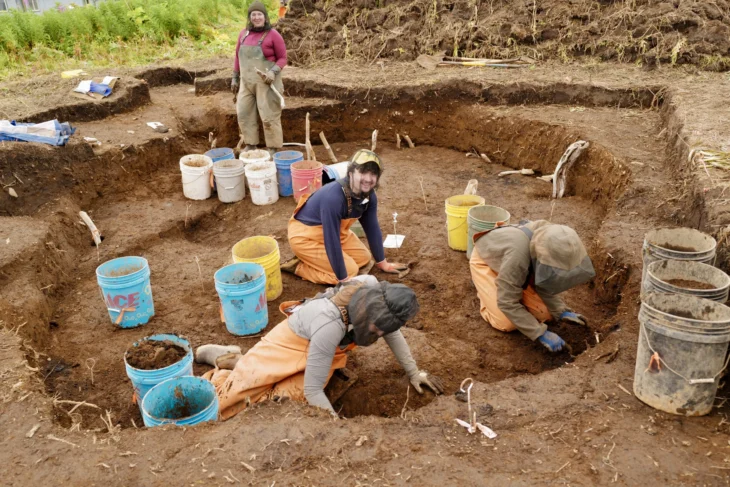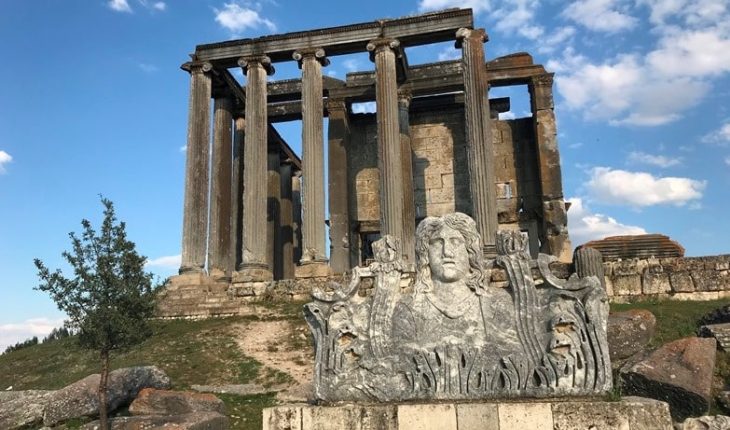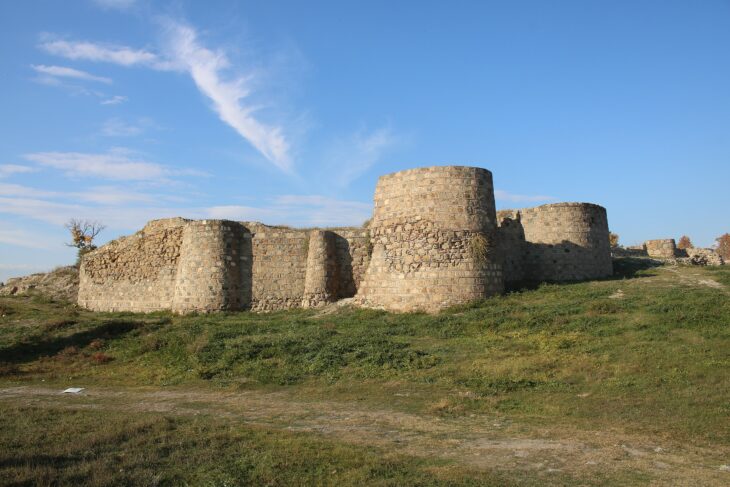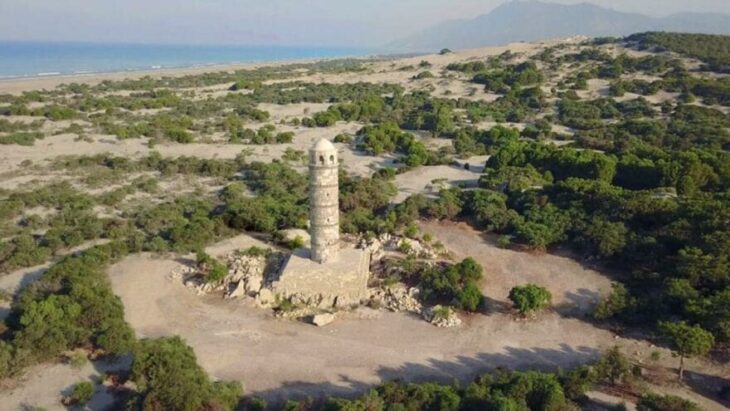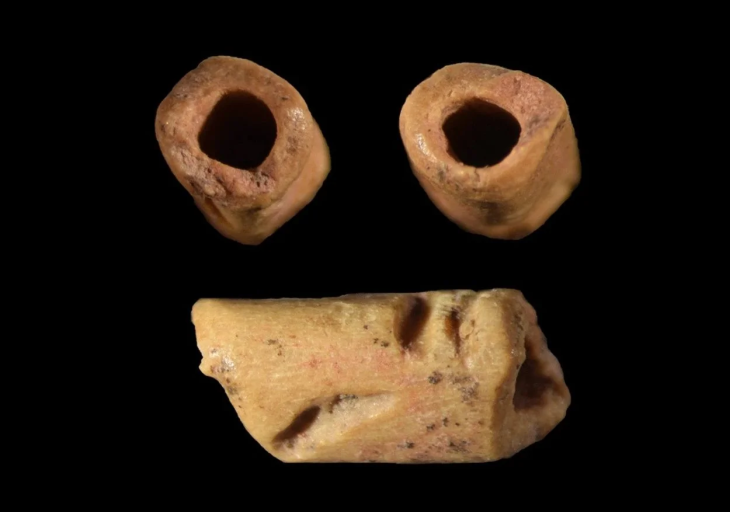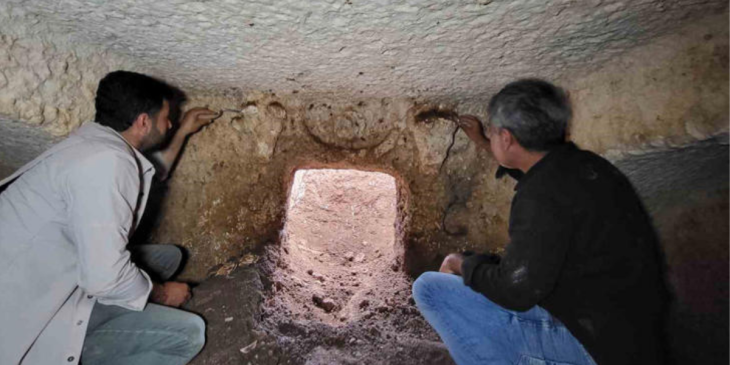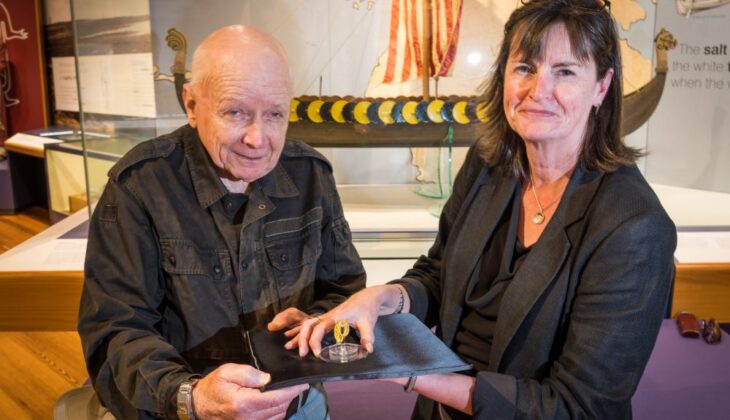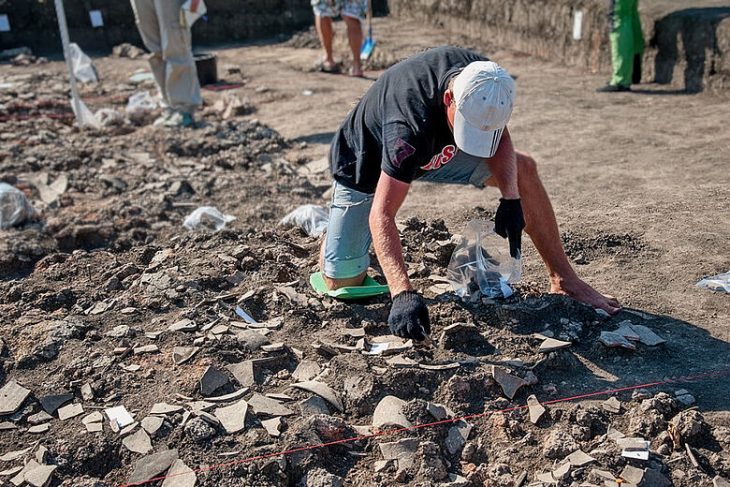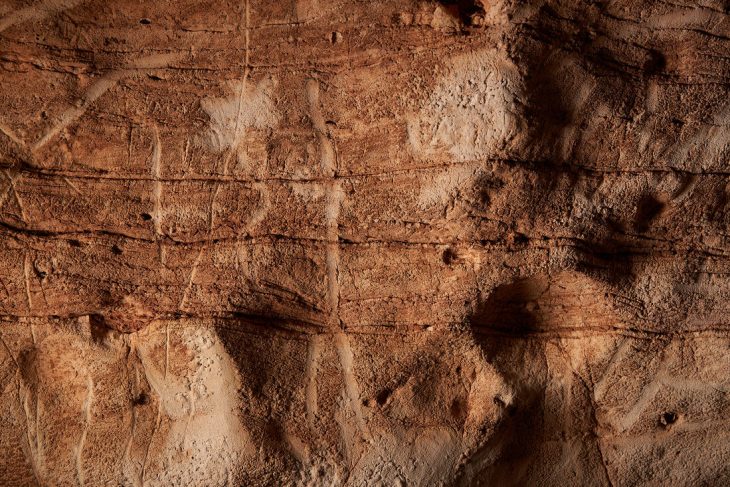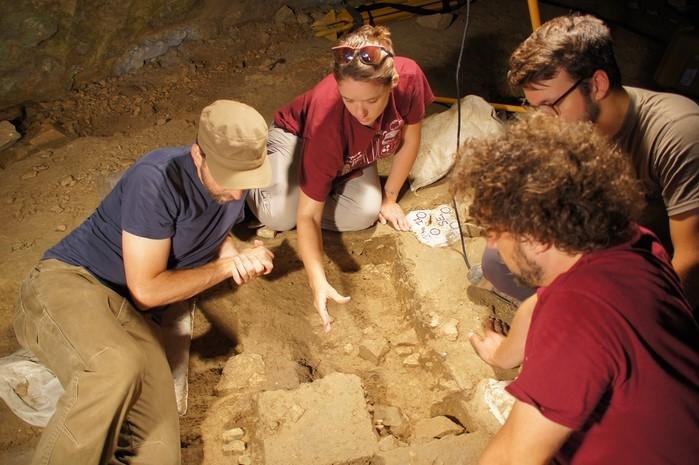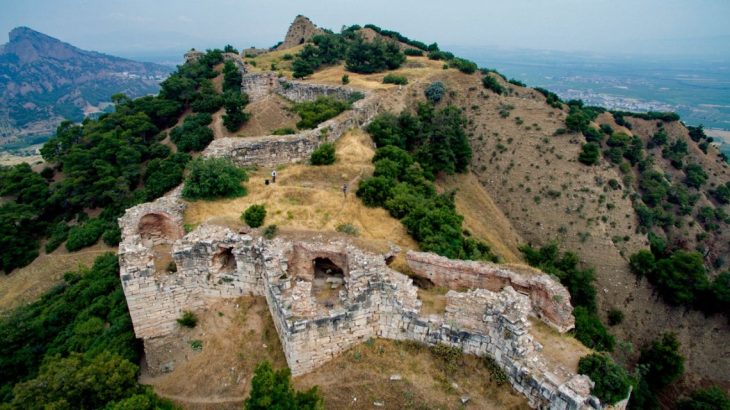Zile, a district in the Tokat province of northern Türkiye, has long been recognized as one of Anatolia’s most historically rich settlements. With a history dating back nearly 900,000 years, Zile has served as a cradle for numerous civilizations, including the Hittites, Phrygians, and Romans.
Recently, an intricately crafted Roman mosaic was unearthed during an illegal excavation in the region—an unexpected find that now sheds new light on Zile’s ancient past and its possible role as a Roman civic center.
Mosaic Suggests Presence of a Roman Public Building
The mosaic was discovered during an unauthorized dig in Zile and has since captured the attention of archaeologists and heritage authorities. Initial expert assessments suggest that the mosaic likely adorned the floor of a public building from the Roman period. The presence of vibrant green, yellow, blue, and white tiles, alongside inscriptions referring to “abundance, prosperity, peace, and well-being,” strongly indicate a public or communal function of the site.
According to archaeologist Halis Alıcı, from the Yağıbasan Madrasa Museum of Turkish-Islamic Science History, such mosaics are commonly associated with Roman civic architecture. “We typically encounter mosaics of this kind in Roman public buildings — military recruitment centers, health facilities, marketplaces, or political meeting spaces,” Alıcı stated. He added that the stylistic and chromatic features of the mosaic point to a date ranging from the mid to late Roman period, potentially around 400 BCE or later.
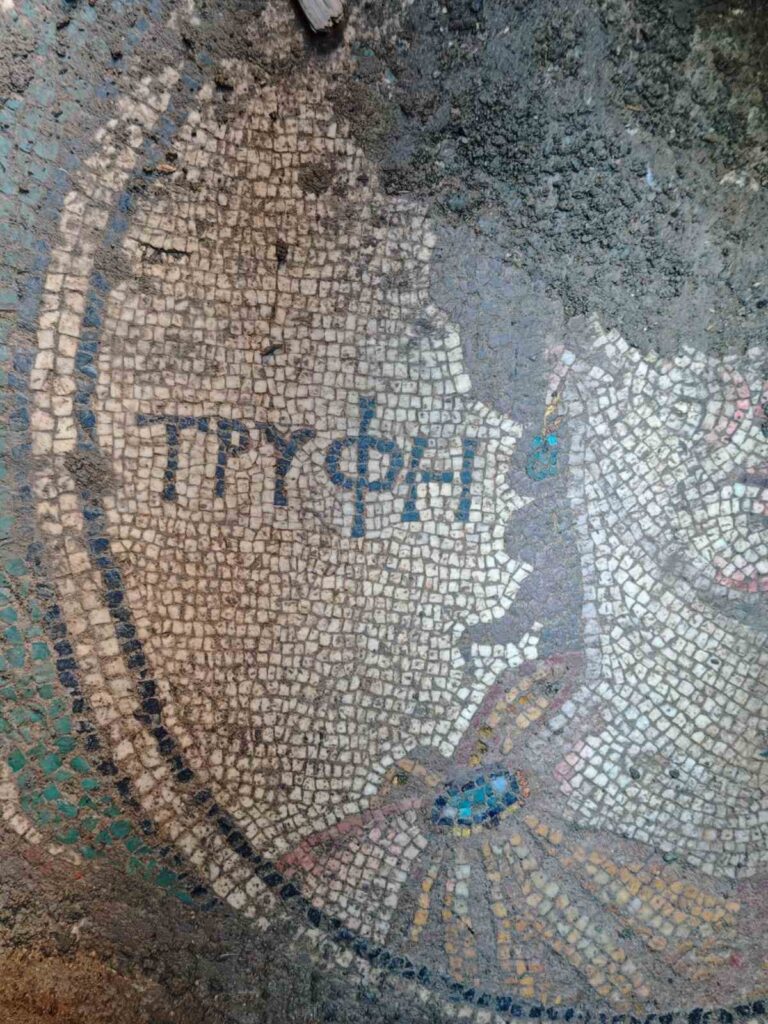
Not Just Art—A Message of Civic Identity
Experts emphasize that Roman mosaics often served purposes beyond decoration. These works were symbolic representations of power, ideology, and public values. The specific words found in the Zile mosaic — abundance, prosperity, peace, and well-being — echo the ideals of civic life promoted during the Roman Empire, particularly in public spaces used for governance or communal activity.
📣 Our WhatsApp channel is now LIVE! Stay up-to-date with the latest news and updates, just click here to follow us on WhatsApp and never miss a thing!!
This discovery underscores the sociopolitical importance of the site and suggests that Zile may have held regional administrative or military significance during the Roman period.
A Site of Rich Archaeological Potential
Zile has previously yielded significant finds from multiple historical eras, including the nearby Horoztepe and Maşat Höyük excavation sites. However, this newly discovered mosaic not only adds a layer to Zile’s Roman history but also highlights the ongoing threat of illegal excavations. Fortunately, local authorities quickly intervened, covering the mosaic with a protective tent and tarp to prevent further damage while plans for formal excavation and preservation are developed.
Zile’s Tourism and Cultural Value on the Rise
As public awareness of the mosaic grows, there is hope that the site will soon become an officially recognized archaeological zone, contributing to Zile’s cultural tourism potential. Locals and history enthusiasts alike are calling for proper preservation, documentation, and eventual public exhibition of the mosaic, which could become a central attraction in promoting Zile’s ancient heritage.
A New Chapter in Tokat’s Roman Legacy
This remarkable find is more than just a beautiful floor decoration—it is a window into the civic life of ancient Zile and a testament to its historical depth. As scientific excavations continue, archaeologists expect more insights into urban planning, community structure, and Roman influence in northern Anatolia. The mosaic may be the beginning of a new chapter in Tokat and Zile’s archaeological narrative.
Cover Image Credit: İHA

